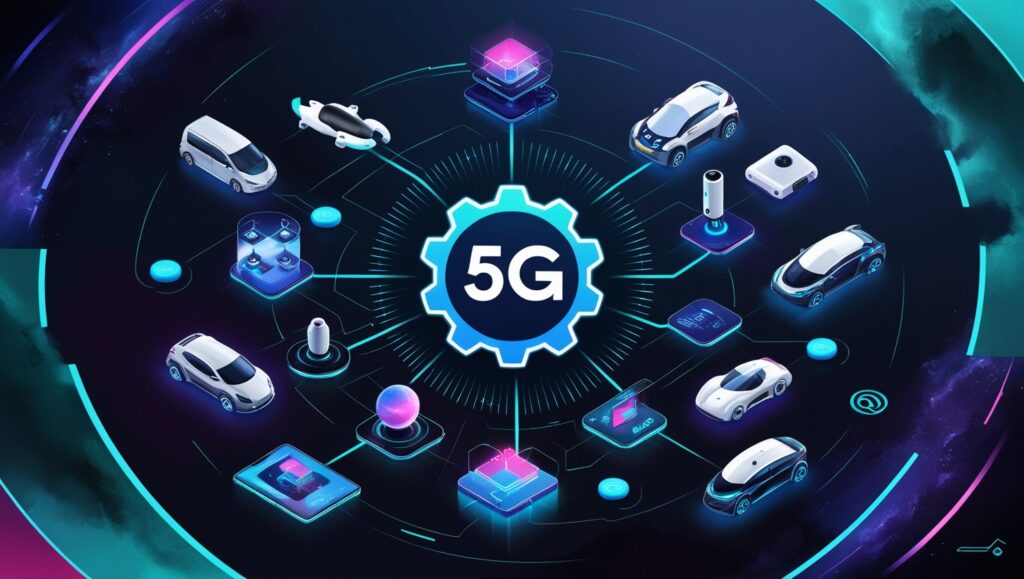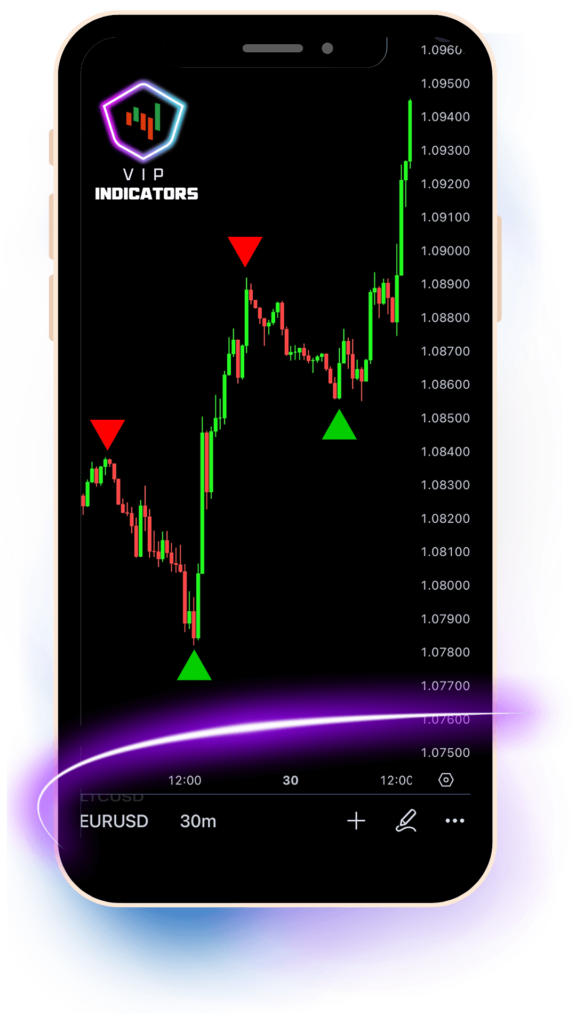5G technology is more than just a leap forward in mobile networking; it’s reshaping the entire concept of global connectivity. The rollout of 5G promises faster speeds, lower latency, and broader bandwidth, unlocking potential that was previously unimaginable. From healthcare to transportation and entertainment to industrial automation, the impact of 5G is already being felt.
Introduction to 5G Technology
What is 5G Technology?
5G, or the fifth generation of mobile network technology, is designed to support higher performance in terms of speed, reliability, and connectivity. Unlike its predecessors, 5G is about more than just faster internet on mobile phones; it aims to create a global network of connected devices, enabling breakthroughs in the Internet of Things (IoT), autonomous vehicles, and even remote healthcare.
Evolution from 4G to 5G
The transition from 4G to 5G represents a significant technological leap. While 4G introduced fast mobile broadband, 5G amplifies these capabilities by introducing millimeter waves, allowing faster data transmission and reduced congestion. These improvements mean devices can communicate faster and more reliably, with nearly instant response times.

Core Components of 5G
5G networks consist of various technological components, including small cell stations, massive MIMO (Multiple Input, Multiple Output) antennas, and beamforming technologies. These innovations collectively allow 5G to handle more devices per square kilometer while offering greater speeds and reliability.
5G vs Previous Generations (3G, 4G)
Key Differences Between 5G and 4G
While 4G LTE brought significant advancements in mobile data, 5G brings revolutionary changes. It offers speeds up to 100 times faster than 4G, with lower latency and higher capacity. 5G can support many more devices per square kilometer, making it ideal for densely populated areas and large-scale IoT networks.
Speed, Latency, and Bandwidth
One of the defining features of 5G is its reduced latency, often as low as 1 millisecond, compared to 4G’s 50 milliseconds. The enhanced bandwidth means 5G can handle massive data loads, supporting everything from virtual reality (VR) experiences to real-time gaming, all without lag.

Application Expansion Enabled by 5G
With its superior performance, 5G is enabling applications previously out of reach. From seamless augmented reality (AR) to autonomous drones, 5G’s speed and bandwidth open the door to innovations that rely on real-time data transmission.
The Impact of 5G on Global Connectivity
Bridging the Digital Divide
One of the most transformative effects of 5G is its potential to bridge the digital divide, bringing high-speed internet to underserved areas. In regions where internet access is currently limited, 5G can provide a cost-effective solution to ensure widespread connectivity, reducing inequalities in access to information and communication technologies.
Enhancing Connectivity in Remote Areas
Rural and remote areas, often overlooked in previous network upgrades, stand to benefit significantly from 5G. The low-power wide-area (LPWA) technology embedded in 5G allows it to deliver fast and reliable internet even in challenging geographies, ensuring more inclusive connectivity.

5G’s Role in Smart Cities
Smart cities rely heavily on real-time data and efficient communication systems. 5G provides the backbone for these initiatives, enabling cities to optimize energy usage, manage traffic, and improve public safety. By connecting sensors, cameras, and other IoT devices, 5G is instrumental in creating more sustainable and livable urban environments.
How 5G is Revolutionizing Communication?
Real-time Communication Enhancements
One of the most noticeable impacts of 5G technology is the improvement in real-time communication. With latency reduced to nearly zero, users experience faster, clearer, and uninterrupted communication. Whether it’s video calls, conference calls, or messaging, 5G ensures smooth, real-time interactions without the typical buffering or delays seen in 4G networks.
Improvements in Video and Audio Quality
5G enables ultra-high-definition video and crystal-clear audio transmissions, significantly enhancing user experiences across communication platforms. Video conferencing platforms, like Zoom or Microsoft Teams, are now able to stream 4K video, providing more lifelike interactions. This has made remote work, online education, and even telemedicine more reliable and engaging.

Effects on Streaming Services and Social Media
The rise of streaming platforms and social media has transformed how people consume entertainment and communicate. 5G’s ability to handle higher data rates and more connections means users can stream movies and shows in 4K and 8K resolution without lag, buffering, or interruptions. Social media platforms like Instagram, TikTok, and YouTube are taking advantage of 5G to provide real-time, high-definition content that loads instantly, enhancing user engagement.
5G and the Internet of Things (IoT)
Enabling IoT Devices with 5G
The Internet of Things (IoT) consists of a vast network of interconnected devices that communicate with one another to automate processes and gather real-time data. With 5G, the capabilities of IoT devices are expanded tremendously. Due to 5G’s higher speed and lower latency, billions of IoT devices, ranging from smart home appliances to industrial sensors, can communicate more efficiently. This facilitates better automation and smarter decision-making based on real-time data analysis.
Industrial IoT Applications
In industries like manufacturing, logistics, and energy, IoT devices have transformed operations by making processes more efficient and reducing downtime. 5G networks allow sensors and machinery to interact faster and more reliably, enabling predictive maintenance and advanced robotics. Factories powered by 5G can automate entire production lines with real-time monitoring, enhancing productivity and reducing operational costs.

Smart Homes and Smart Cities
In the smart home sector, 5G enhances the capabilities of devices such as security cameras, thermostats, and smart speakers, allowing them to respond to user commands instantly and operate more efficiently. Smart cities, which rely on large-scale IoT deployments to manage services like traffic, energy, and public safety, will see unprecedented improvements with 5G. Traffic lights, surveillance systems, and public transport networks can interact in real-time, improving safety and convenience for residents.
The Role of 5G in Autonomous Vehicles
How 5G is Supporting Self-driving Cars
Autonomous vehicles rely on fast and reliable communication with their surroundings to operate safely. 5G enables real-time data exchange between the vehicle, other cars, traffic infrastructure, and cloud-based systems, creating a more cohesive transportation environment. The ultra-low latency of 5G ensures that self-driving cars can make split-second decisions, improving safety and efficiency.
Vehicle-to-Everything (V2X) Communication
5G is also the backbone of Vehicle-to-Everything (V2X) communication, which allows cars to communicate with each other, pedestrians, and road infrastructure. V2X communication reduces the risk of collisions and improves traffic flow, contributing to safer, smarter roads. Vehicles can communicate potential hazards, traffic conditions, and speed limits in real-time, creating a dynamic and responsive driving environment.

Enhanced Traffic Management and Safety
With 5G, transportation systems can become fully automated. Traffic lights can adjust in real-time based on traffic flow, and emergency vehicles can get priority routing, reducing response times. Additionally, the ability for vehicles to communicate in real-time with surrounding infrastructure reduces the likelihood of accidents, making roads safer for everyone.
5G in Healthcare
Telemedicine Advancements
The healthcare sector stands to gain enormously from the widespread adoption of 5G. Telemedicine, which enables doctors to diagnose and treat patients remotely, has become more viable with 5G’s low latency and high-speed data transfer. Video consultations, remote diagnostics, and even virtual surgeries can be conducted with greater precision and reliability.
Remote Surgery Enabled by 5G
One of the most groundbreaking applications of 5G in healthcare is the ability to perform remote surgeries. Surgeons can now operate on patients in different locations using robotic systems that are controlled remotely. The low latency of 5G ensures that there is no delay in the surgeon’s movements, making these procedures safer and more accurate. Remote surgery can provide life-saving interventions in emergencies where patients are located far from specialized healthcare facilities.

Patient Monitoring Systems
5G also enhances the ability of healthcare providers to monitor patients remotely. Wearable devices that track vital signs, such as heart rate and oxygen levels, can send real-time data to healthcare professionals, allowing for continuous patient monitoring. This is especially important for patients with chronic conditions who require regular monitoring but cannot be in the hospital full-time.
5G in Entertainment and Media
Streaming in Ultra-High Definition (UHD)
With the introduction of 5G, content creators and consumers can now stream in Ultra-High Definition (UHD) formats, such as 4K and 8K, without buffering or interruptions. This provides a richer, more immersive viewing experience. Streaming platforms like Netflix, YouTube, and Disney+ can deliver seamless UHD content to millions of users simultaneously.
Augmented Reality (AR) and Virtual Reality (VR)
5G is driving the expansion of augmented reality (AR) and virtual reality (VR) in entertainment and education. The faster data speeds and low latency enable AR and VR experiences to be more interactive and lifelike. Applications range from immersive video games to virtual travel experiences, educational simulations, and even virtual concerts and events.

5G’s Impact on Gaming and E-sports
In the gaming industry, 5G is revolutionizing how gamers interact with each other and their virtual environments. With 5G, multiplayer online games can be played with virtually no lag, creating a smoother and more competitive experience for players. This also enhances the potential for cloud gaming, where users can play high-end games on any device without needing expensive hardware, as the game processing is done remotely on powerful servers.
The Role of 5G in Industrial Automation
Manufacturing Process Automation
In manufacturing, 5G allows for more precise control and automation of production lines. Factories equipped with 5G can use advanced robotics, sensors, and machine learning to optimize production, reducing errors and downtime. With real-time monitoring, production systems can automatically adjust to maintain efficiency and ensure quality.
Impact on Supply Chain and Logistics
5G’s high-speed connectivity also enhances supply chain management. Warehouses equipped with 5G-enabled sensors can track inventory levels in real-time, while delivery vehicles can be monitored and rerouted based on real-time traffic conditions. This leads to faster and more efficient logistics operations.

Remote Machinery Control
5G makes it possible to control heavy machinery from remote locations. Whether it’s mining equipment or agricultural tractors, operators can use real-time data to guide machinery with precision, increasing productivity and safety in hazardous environments.
Security Challenges in 5G Networks
Increased Cybersecurity Threats
While 5G offers unprecedented opportunities, it also introduces new cybersecurity risks. The sheer number of connected devices and the expanded attack surface mean that cybercriminals have more entry points to exploit. Governments and organizations need to implement stringent security protocols to protect against these emerging threats.
Privacy Concerns and Solutions
With more devices collecting and transmitting personal data, privacy concerns have become more prominent. However, 5G networks are being designed with stronger encryption and security measures to ensure that data privacy is maintained. Users must also be vigilant and adopt best practices to safeguard their personal information.

Network Vulnerability and Protection Strategies
As 5G networks are deployed, they become more vulnerable to cyberattacks targeting critical infrastructure. Implementing multi-layered security approaches, including encryption, authentication, and real-time monitoring, is essential for protecting these networks from potential breaches.
Future of 5G and Beyond
The Path Toward 6G
While 5G is still in its early stages, researchers and engineers are already looking ahead to the next generation of mobile technology—6G. Although it is years away from deployment, early studies suggest that 6G will offer even faster speeds, lower latency, and greater capacity than 5G. With potential data rates up to 100 times faster than 5G, 6G could enable advanced applications such as holographic communication, immersive virtual reality, and fully autonomous systems.
The development of 6G will build upon the innovations introduced by 5G, but it will also require new infrastructure, technologies, and regulatory frameworks. As the world prepares for 6G, industries and governments will need to invest in research and development to stay competitive in the global technology race.
Expected Innovations and Applications
As 5G matures, it will lead to the development of new applications and services that have yet to be imagined. In the coming years, we can expect to see innovations in fields like artificial intelligence (AI), robotics, and quantum computing, all of which will rely on the speed and capacity of 5G networks. These technologies will revolutionize industries such as healthcare, education, and transportation, providing new solutions to global challenges.

Long-term Societal and Technological Impacts
The long-term societal impacts of 5G will be profound. By enabling smarter cities, improving healthcare, and fostering innovation, 5G has the potential to improve quality of life for millions of people. However, it also presents challenges, such as increased digital surveillance, data privacy concerns, and the potential displacement of jobs due to automation.
Technologically, 5G will serve as the foundation for future innovations. As more devices become connected and more data is generated, 5G will play a crucial role in managing this information and ensuring seamless communication between systems.
Conclusion
In summary, 5G technology is not just about faster mobile internet—it is a transformative force that is reshaping the way we communicate, work, and live. From enabling the Internet of Things (IoT) to revolutionizing healthcare, 5G is laying the groundwork for a future that is more connected, efficient, and innovative. While challenges such as infrastructure development and regulatory hurdles remain, the long-term benefits of 5G far outweigh the obstacles.
As 5G continues to evolve, it will drive economic growth, foster technological innovation, and enhance global connectivity, ultimately making the world a more interconnected place.
FAQs
1. How fast is 5G compared to 4G?
5G is significantly faster than 4G, offering speeds up to 100 times greater. While 4G networks typically provide speeds of around 100 Mbps, 5G can deliver speeds up to 10 Gbps under optimal conditions.
2. Will 5G improve mobile phone reception in rural areas?
Yes, 5G has the potential to improve mobile reception in rural areas, although the rollout in these regions may take longer due to infrastructure challenges. 5G’s low-band spectrum can cover larger areas, making it ideal for rural connectivity.
3. What industries will benefit the most from 5G?
Industries such as healthcare, transportation, manufacturing, and entertainment stand to benefit the most from 5G technology. Its fast speeds and low latency will enable advancements in telemedicine, autonomous vehicles, smart factories, and real-time streaming services.
4. Is 5G safe for public health?
Yes, 5G is considered safe for public health. Numerous studies have been conducted on radiofrequency radiation, and current evidence suggests that 5G poses no greater health risks than previous generations of wireless technology.
5. When will 5G be available everywhere?
The global rollout of 5G is ongoing, and availability varies by region. Many urban areas already have access to 5G, but it may take several more years for 5G to be available in rural and remote areas worldwide.
6. How does 5G impact my daily internet usage?
With 5G, you can expect faster download and upload speeds, improved video streaming quality, and a more reliable connection, even in crowded

Ai POWERED TRADING INDICATORS
Win Up To 93% Of Your Trades With The World’s #1 Most Profitable Trading Indicators



